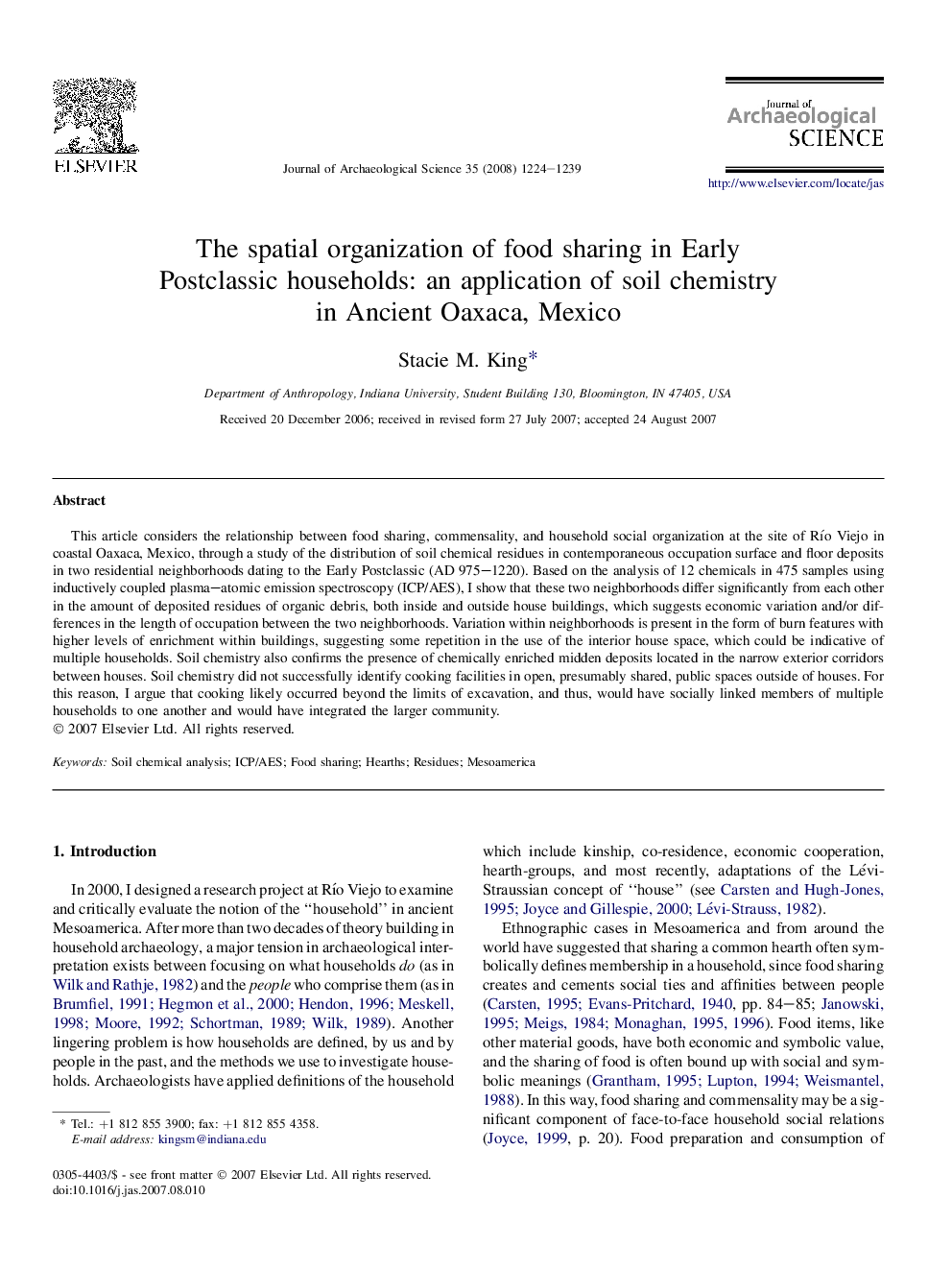| Article ID | Journal | Published Year | Pages | File Type |
|---|---|---|---|---|
| 1037351 | Journal of Archaeological Science | 2008 | 16 Pages |
Abstract
This article considers the relationship between food sharing, commensality, and household social organization at the site of RÃo Viejo in coastal Oaxaca, Mexico, through a study of the distribution of soil chemical residues in contemporaneous occupation surface and floor deposits in two residential neighborhoods dating to the Early Postclassic (AD 975-1220). Based on the analysis of 12 chemicals in 475 samples using inductively coupled plasma-atomic emission spectroscopy (ICP/AES), I show that these two neighborhoods differ significantly from each other in the amount of deposited residues of organic debris, both inside and outside house buildings, which suggests economic variation and/or differences in the length of occupation between the two neighborhoods. Variation within neighborhoods is present in the form of burn features with higher levels of enrichment within buildings, suggesting some repetition in the use of the interior house space, which could be indicative of multiple households. Soil chemistry also confirms the presence of chemically enriched midden deposits located in the narrow exterior corridors between houses. Soil chemistry did not successfully identify cooking facilities in open, presumably shared, public spaces outside of houses. For this reason, I argue that cooking likely occurred beyond the limits of excavation, and thus, would have socially linked members of multiple households to one another and would have integrated the larger community.
Related Topics
Physical Sciences and Engineering
Materials Science
Materials Science (General)
Authors
Stacie M. King,
